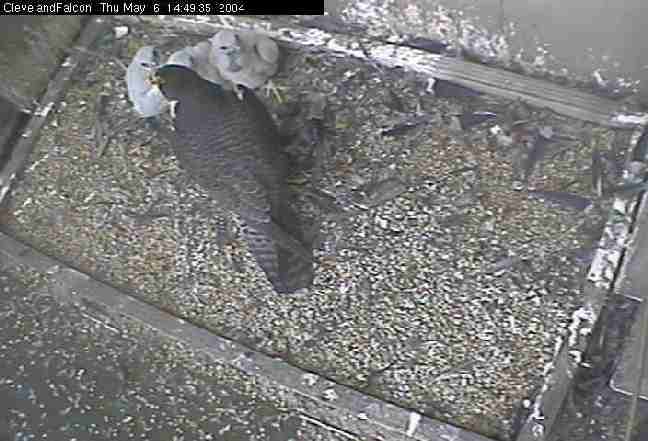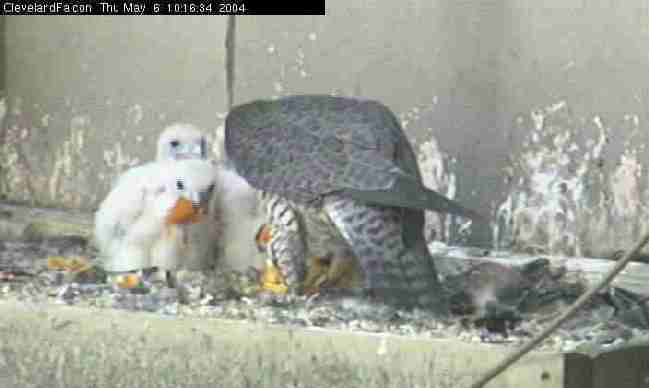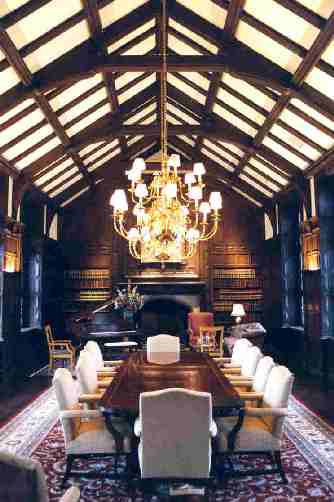Scott Wright, volunteer peregrine falcon nest monitor for 12 years at this site reports: "Among the young falcons, competition for food can be just like with any children, with pushing and shoving to get to the parent with food. I have seen one young falcon take the food right out of another's beak if they did not get it down fast enough, or the piece of food placed into the open beak was too big for the chick to eat.
Male falcons will sometimes arrive at the nest with live food, but I have only seen this a few times in my now 12 years of monitoring. Most times the impact will stun the food and the talons hold the food until the food becomes food.
Most times the male will have killed the prey, clipped the wings, taken off the head, and sent the feathers flying in the wind as he cleans the meal before he feeds his mate and chicks. Many times you cannot even tell what the food was before it was the meal. I have seen the following (not in any order, but by how my mind recalls them) brought into the nestbox: Barn Swallow, Tree Swallow, Red Eyed Vireo, Night Hawk, Black and Yellow-billed Cuckoo, Yellow Warbler, Woodcock, Coot, unknown large Sandpiper, Cedar Waxwing, House Sparrow, Rock Dove, Mourning Dove, unknown Seagull, Red- winged Blackbird, Grackle, Pie-billed Grebe, Robin, unknown Thrush, Song Sparrow, Blue Jay, Flicker, Grey Catbird, Goldfinch..... Many times all you can say is that they brought a LBB to the nest (little Brown Bird) or LGB (little grey bird).
What do peregrines eat? Anything that flies that is smaller than them."



